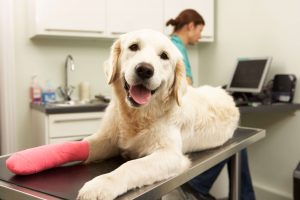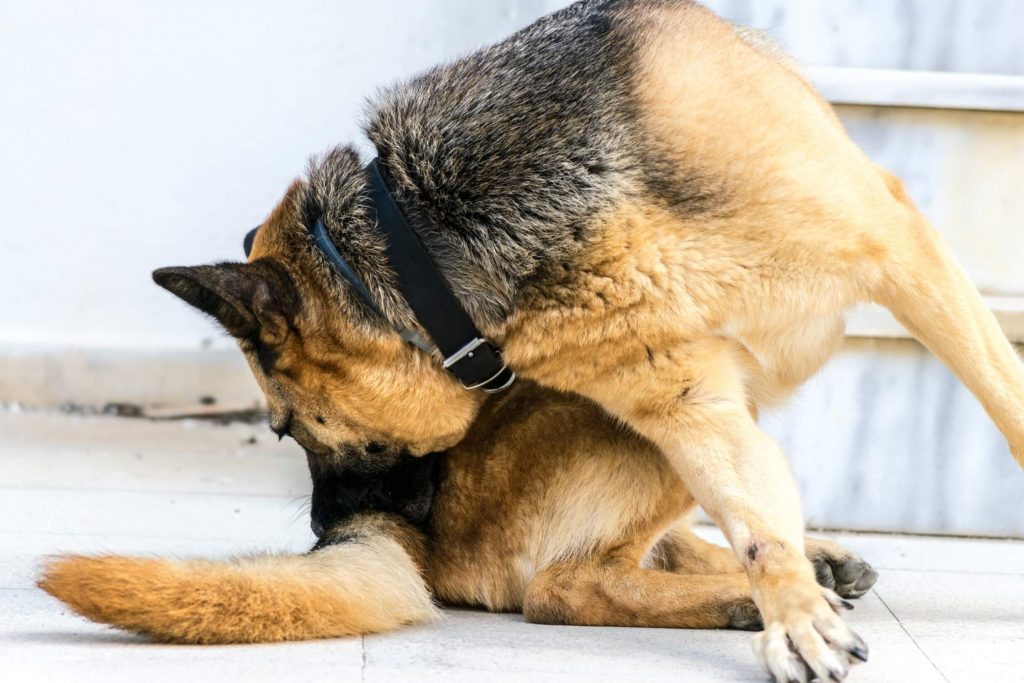Compulsive Disorders and Manias in Dogs


Written and verified by the lawyer Francisco María García
Compulsive disorders and manias in dogs are among the most frequent behavioral disturbances in pets. They consist of clinical patterns where the animal loses its ability to control its emotions, which instead they are expressed through certain obsessive behaviors.
This lack of control is usually temporary, but in more serious cases, it can take place for several hours at once. This is precisely why this condition puts the animal’s physical and emotional health at risk.
As if that were not enough, the animal can even get to the point of self-mutilation. When these episodes take place, the animal moves so frantically that it unfortunately hurts itself without realizing it, and refuses to stop until it feels pain.
Most dogs diagnosed with compulsive disorders lick their tails compulsively. Others intensely bite several body parts, while others tend to repeatedly chase their tails.

Causes of Compulsive Disorders and Manias in Dogs
The development of compulsive behaviors in dogs is usually associated with a history of physical and emotional abuse. Therefore, it occurs frequently in dogs that were abandoned or born on the streets. However, compulsive disorders can also arise due to excessive anxiety, lack of stimulation, or prolonged incarceration. Additionally, animals that experience intense pain can develop certain obsessive behaviors.
Therefore, many studies prove that pathologies affecting an animal’s sensory functions can cause compulsive disorders and manias in dogs.
How to Spot Compulsive Disorders in Dogs at an Early Stage
Diagnosing manias and compulsive disorders in dogs is important for preventing self-destructive behaviors. Therefore, it’s necessary for dog owners to be aware of initial signs of obsessive behaviors in their pets.
In general, the first symptoms of compulsive disorders in dogs are actually an intensification of “canine” behaviors. It’s important to consider that some forms of repetition are inherent to canine behavior. However, when it becomes pathological, the intensity of this behaviors puts the animal’s health at risk.
If a dog begins to excessively bark, dig, lick, chase its tail or scratch itself, it’s best to go to the veterinarian immediately. The affected animal will often develop several symptoms of separation anxiety. This includes chewing—or destroying—household items, clothing or shoes, as well as urinating and defecating in unusual places.
Symptoms of Advanced Compulsive Disorders and Manias in Dogs
In more serious cases, when a person diagnoses a compulsive disorder during a later stage, a dog will usually show the following symptoms:
- Sores and wounds on body (mainly on its tail and legs.)
- Frantically licking or biting its wounds or sores.
- Bleeding on its legs or tail, usually due to self-destructive behavior.
- Hair loss or changes to its coat.
- Changes in the animal’s usual behavior, such as: aggression, becoming startled, hiding, isolation, etc.
- Avoiding physical contact with people and animals.
How to Treat Compulsive Disorders and Manias in Dogs
Even though they somatize in a very obvious manner, compulsive disorders and manias in dogs have a psychological origin. That is why treatment for these problems should have appropriate amounts of attention to the animal’s body, and especially its mind.
You must understand that a dog with compulsive disorder is experiencing an emotional imbalance which reflects on its behavior. These dogs need a lot of patience and dedication from their owners in order to recover. These dog owners must be prepared to assume the responsibility of swapping around their best friend’s environment, as well as their animal’s lifestyle.

Most animals affected by these conditions must undergo a training and socialization process to help strengthen their self-confidence. Having an experienced professional take over the animal’s training is also a good idea.
Additionally, if the animal has already caused itself sores and other wounds, it’s important to sterilize them and help them heal. The animal may be prescribed antibiotics and/or other appropriate medications according to location of the wounds.
Although it may seem obvious, it’s worth mentioning that a veterinarian is the only professional authorized to recommend a treatment for these animals. You have to handle these types of situations, that inevitably affect an animal’s health, with extreme care.
Can You Prevent Compulsive Disorders and Manias in Dogs?
These are some of the most effective ways of avoiding manias and compulsive disorders in dogs:
- Provide the animal with a healthy and positive environment.
- Never use physical or emotional violence to “punish” the dog.
- Keep the animal on appropriate preventive medication. This includes: periodic veterinarian check ups, deworming, vaccinations, etc.
- Give him a balanced diet; avoid excessive calories and energy boosters.
- Ensure that the dog is performing physical activities on a regular basis, to alleviate the animal’s tension, stress and/or anxiety.
- Have the dog undergo a proper socialization process, preferably during its first eight months of life.
This text is provided for informational purposes only and does not replace consultation with a professional. If in doubt, consult your specialist.